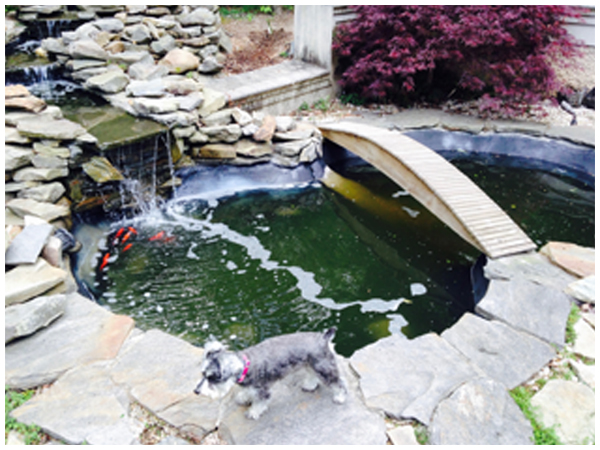Pond Liner Repair: Finding the Leak
If you need to make a pond liner repair, it’s likely because you have a leak in your pond. Pond liners can get scratched, ripped, or punctured by sharp objects like tree branches or other debris in your pond.
If your pond is leaking, you need to find where the leak is coming from to perform the pond liner repair. If the damage is significant enough, you may be able to find it by doing a visual inspection. However, leaks are often caused by tiny tears that are hard to see in the water.
If you don’t immediately notice the damage, you’ll need to try more creatively to find the leak. People suggest many ways to find the leak in your pond, but they all boil down to two processes.
Option One: Leveling the Water
If you’re fairly sure you only have one leak causing substantial water loss, leveling the water is a good way to locate the damage. If you have a lot of leaks, this isn’t the best approach because it can become time-consuming and frustrating.
To level the water, you’ll need to turn all of your pond equipment off, including your pump and any autofill features you have. Then, fill your pond to the top and let it sit and leak until the water level stops dropping.
When the water level stops dropping, you’ve found the point of your leak (or your lowest leak if there’s more than one). Now, inspect your pond liner at that level to find the culprit. If your liner is in good shape, minus this hole, you can proceed with the pond liner repair. Once the repair is complete, refill your pond to check that the leak is gone.
If you’re considering this method for finding the leak, here are the pros and cons.
Pros
- Your fish and plants won’t be exposed to foreign substances or dyes.
- Large holes can be identified quickly.
- It’s an inexpensive method of finding the leak.
Cons
- Turning the circulation off in your pond for an extended time can be stressful for your fish. You may need to remove them while you work.
- If you have more than one leak, you’ll need to do the whole process multiple times.
- This isn’t a great way to look for slow leaks because it will be less noticeable when the water level stops dropping.
Option Two: Using Dye or Milk
Another option is using dye or milk in your pond water. You’ll likely need to replace your pond water if you use milk. Some dyes on the market are made for this process, so they should be safe for your fish and will fade over time.
To use this method, pour dyed water or milk around the outer edge of the pond. Then, watch to see where the colored liquid goes. If you notice that it all goes to a certain area, that’s likely where your leak is.
Consider the pros and cons of this option
Pros
- This method will give you the depth and pinpoint the leak’s location more accurately.
- This can help you locate a leak, even if it’s slower.
Cons
- You’ll be introducing a foreign substance to your fish and plants.
- You must turn your equipment off and remove your fish to avoid water movement during the test.
Takeaway
Finding the leak is the first step in a pond liner repair. Once you find it, use a sealant like Pond Pro 2000 to repair the leak and keep it from causing issues in the future. Your pond will be fixed in no time.






